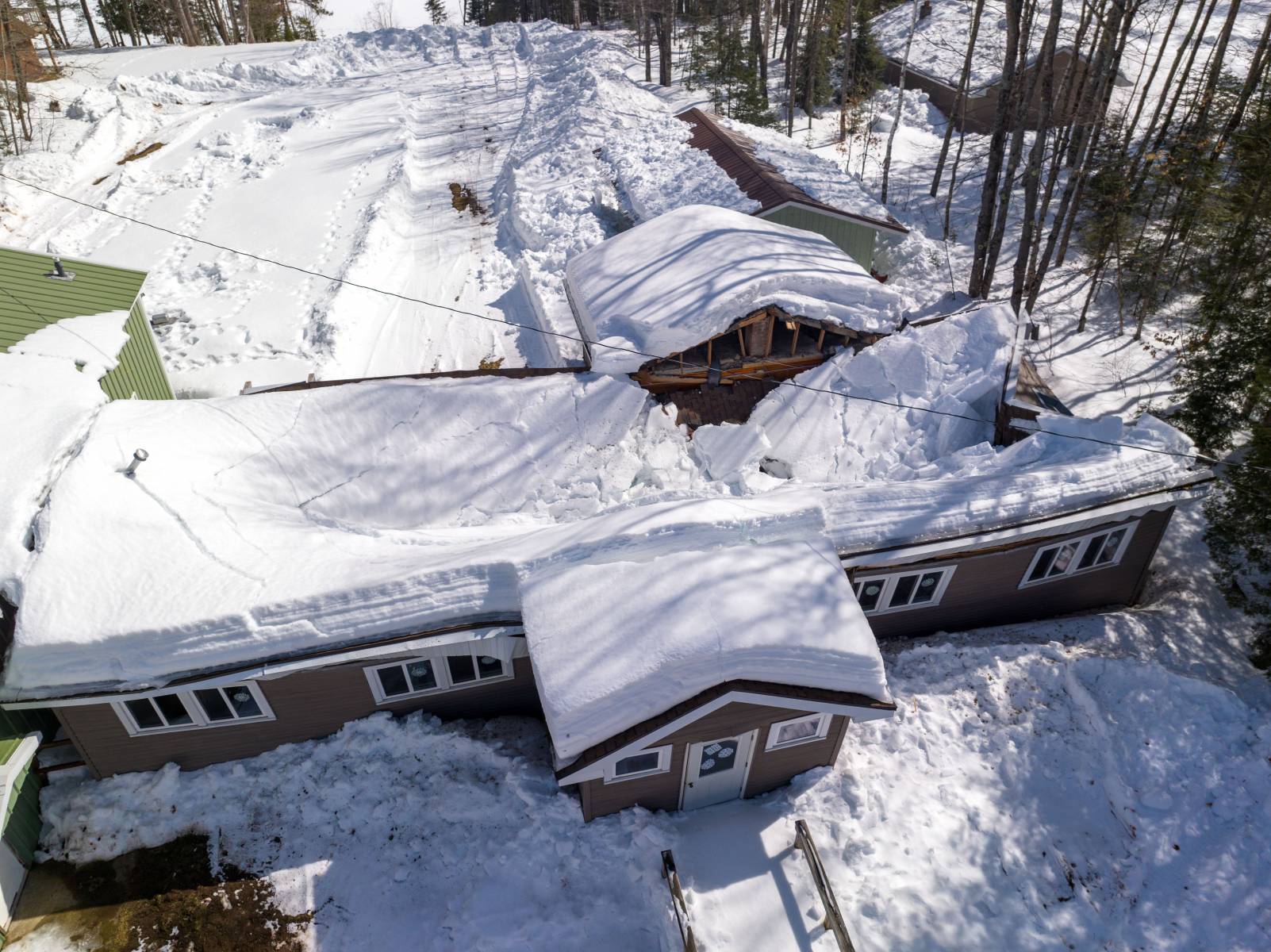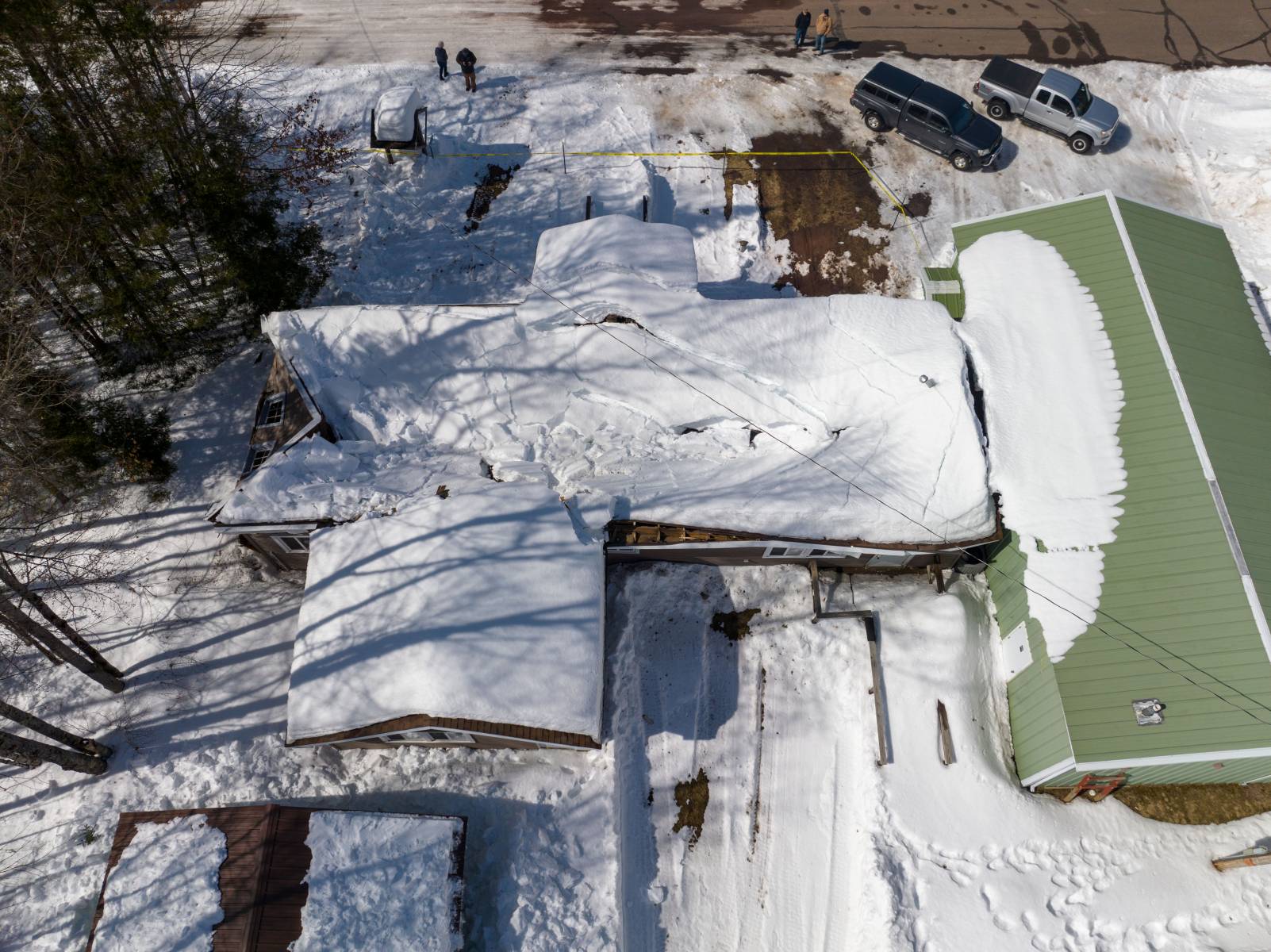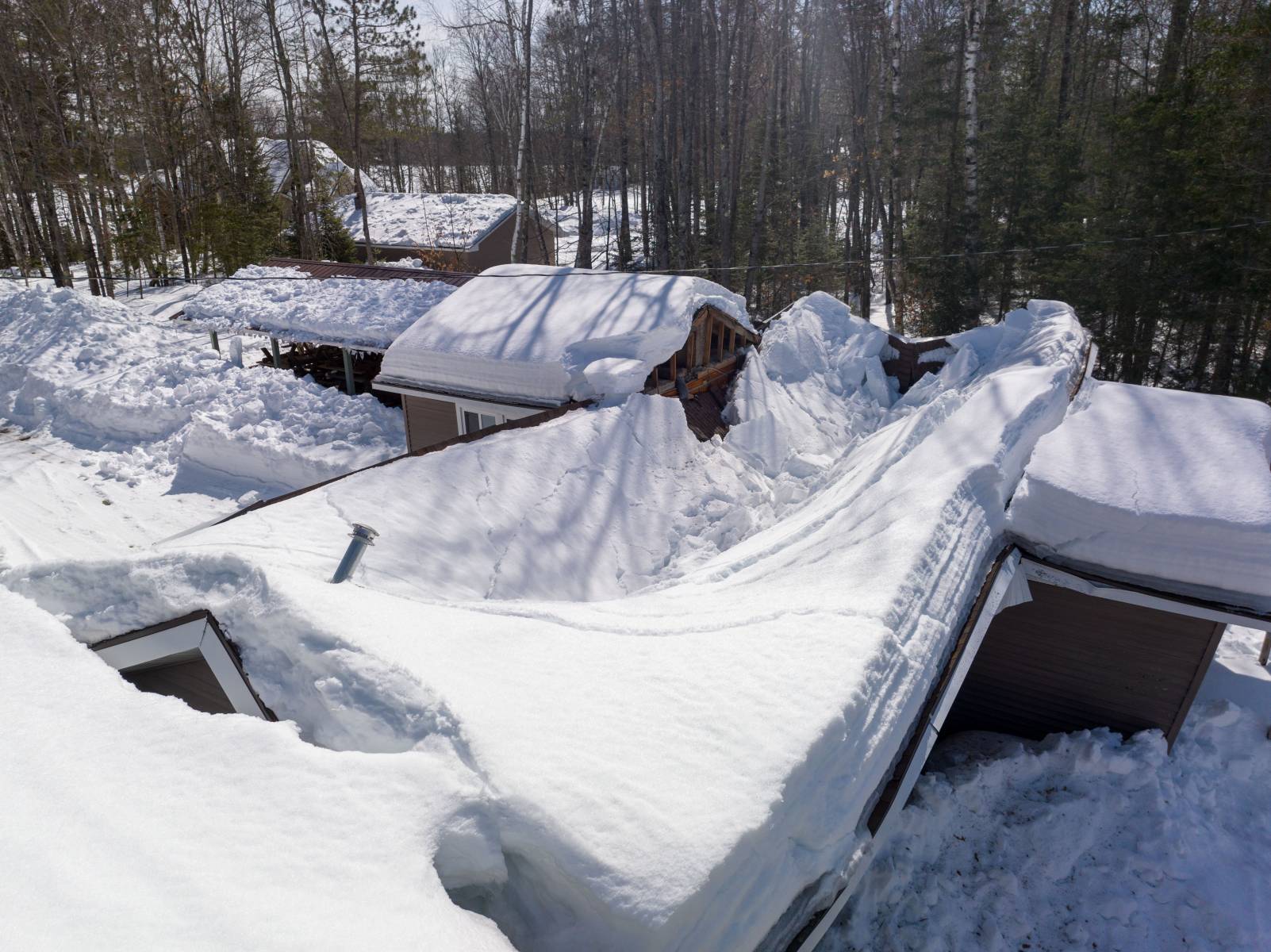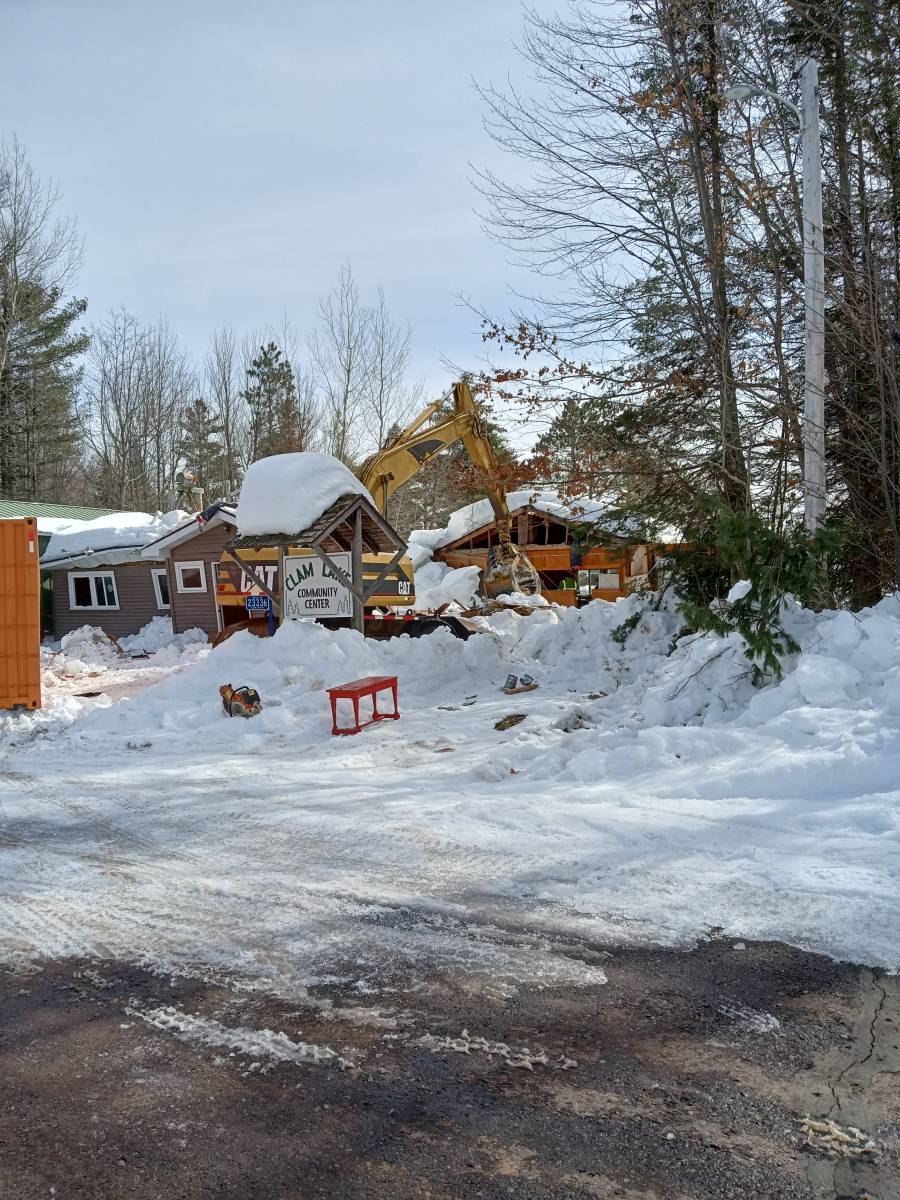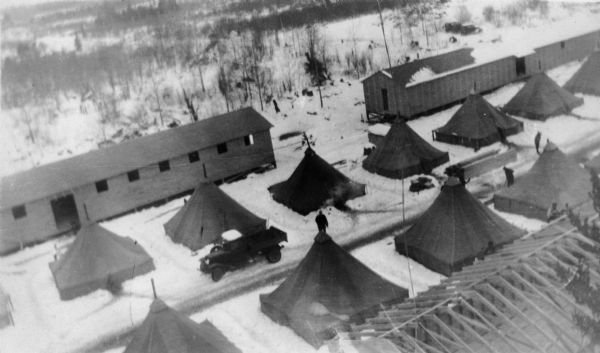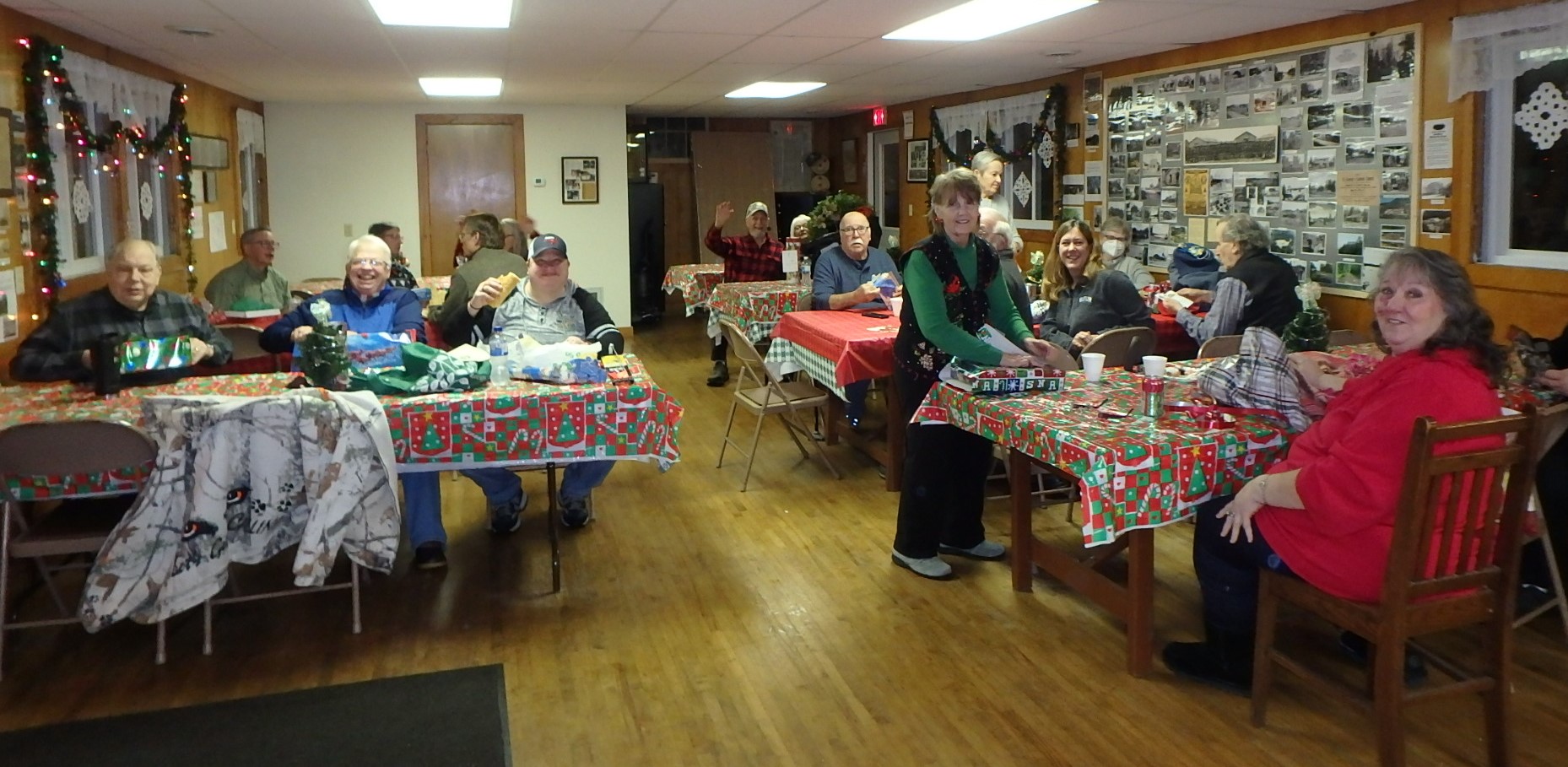“Clam Lake Community Center demolished as walls buckle under snow”
FRANK ZUFALL Staff Reporter, Sawyer County Record, Mar 28, 2023
If the walls of the Clam Lake Community Center could talk, they would tell tales of decades of celebrations — Christmas parties, birthdays and weddings, fireworks and fun.
In recent days, though, they more likely would have been groaning than telling tales — the weight of several feet of snow bearing down on them, forcing them to swell and buckle.
On Monday, their suffering came to an end when the building was demolished as a safety precaution. Just a week earlier, neighbor Jerry Justice was walking by the club and saw that the entire building was leaning, as if being pushed by a strong wind. Justice notified the club’s president who arrived and placed yellow, warning tape around the building to keep people out.
Lynne Rice, the longest living resident of Clam Lake and an officer of the club, invited a reporter to visit the building, which was still standing, on March 23. It was too dangerous to enter.
“It just got noticeably worse from Thursday,” said Rice on Tuesday, March 28.
The decision had by then been made to level the building, taking the roof off first so workers could enter safely and retrieve many of the artifacts, photos and drawings that Rice, as club historian and secretary, had collected over the years.
“It was a long, emotional day,” Rice said.
Rice, who is a correspondent for the Glidden newspaper, wrote, “It is with a heavy heart that I write of the loss of fixture of our community for the past 82 years — The Clam Lake Community Club.”
The community building was built in 1941 by Harry Snyder with help from community members who used the remains of a Civilian Conservation Corps barracks at Camp Beaver along Highway GG South for construction materials.
Camp Beaver was built in 1933 under President Franklin D. Roosevelt, who created the CCC as a federal work relief program that over the Depression years put millions of people to work on projects including upgrading infrastructure, replanting trees and even creating murals.
Camp Beaver stopped functioning in 1936, and in 1937 the barracks was given to the club, Rice said.
“They use to repurpose those CCC buildings a lot back then,” she said. “They took parts of the dismantled barrack and new material to create the club.”
Over the years the interior was remodeled with a stage on one end. Rice said the inside was unique, unlike any small community center.
The small community of Clam Lake used the building for many events: Fourth of July with fireworks shot off the back lot over the nearby lake, Christmas events, seasonal parties, plays, celebrations of birthdays, square dances, community feeds and more.
“The last event held in the Club House was the Christmas party of 2022,” said Rice. “We had decided not to have any more events until spring.”
Rice said the building survived other winters and heavy snows, including the winter of 2013-14 when 144 inches of snow fell. But this winter the Clam Lake area received more than 10 feet of snow that was often wet and heavy.
The old building just couldn’t take it any more.
“There has been so much that happened there over the years as an organization,” Rice said. “This club was instrumental in getting electricity out here and telephone service out here, and even the elk (a herd relocated from Michigan) that we have, people from our civic organization were even involved in that, and they helped obtain a scenic highway designation.”
On Thursday, March 23, Rice was concerned that all the items that had been collected about the area over the years, many she collected personally, would be destroyed if the ceiling fell in.
“There’s a safe in there with old records from when this started in the 1930s,” she said. “There’s also a file cabinet that has more current records that I’m concerned about. I have a lot of historical pictures on the wall, but most of them are laminated copies. I have the originals at the Glidden Museum.”
She was relieved when workers on Monday, March 27 were able to retrieve most and put them into totes.
If there is any good news, it’s that the building is insured and the policy should be enough to get a start on a new structure, but Rice believes there will also have to be community fundraising for what insurance doesn’t cover.



